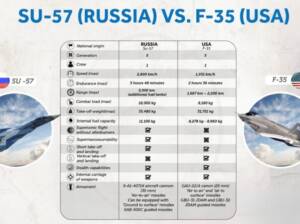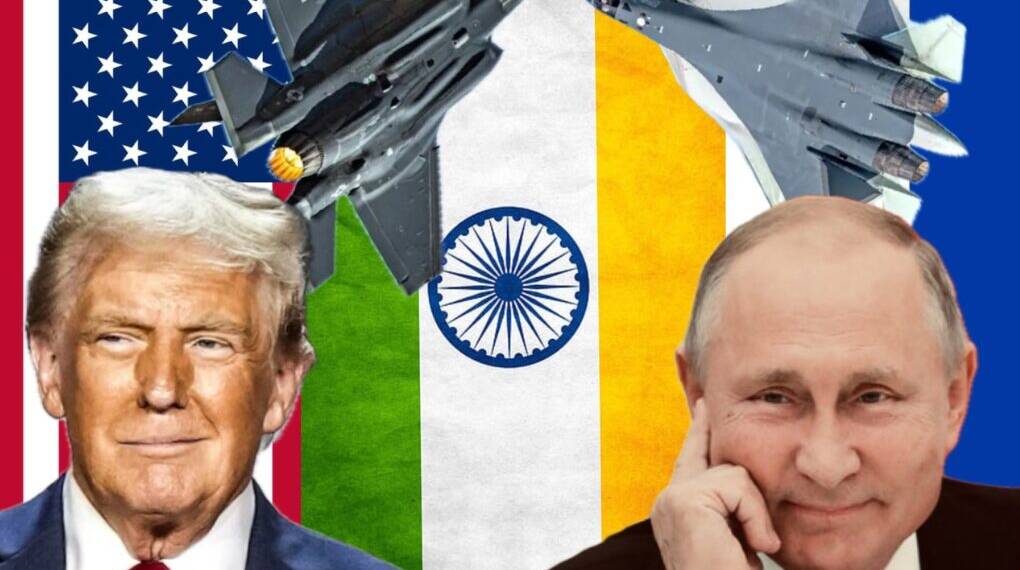In August 2025, India made a decisive strategic choice by rejecting the United States’ offer to purchase Lockheed Martin’s F-35 stealth fighter jets, despite prominent lobbying by U.S. President Donald Trump during Prime Minister Narendra Modi’s February visit to Washington.
This rejection symbolizes a broader assertion of India’s defence autonomy, reflecting both geopolitical tensions and defense modernization policies that prioritize domestic production, technology transfer, and compatibility with existing Russian-origin military systems. Seizing on this opportunity, Russia has proposed a comprehensive alternative package featuring its Su-57E fifth-generation stealth fighter jet, which could significantly reshape India’s air power and regional dynamics.
India’s Rejection of the F-35: Strategic Autonomy and Compatibility Concerns
India’s decision to turn down the F-35, one of the most advanced fifth-generation fighters globally with a price tag near $80 million per unit, was driven by multiple operational and strategic factors. Foremost is India’s enduring emphasis on strategic autonomy and the “Make in India” initiative, focusing on indigenous manufacturing and deep technology transfer. The United States’ offer, while prestigious, fell short in providing the necessary co-production and technology-sharing commitments India requires under its Multi-Role Fighter Aircraft (MRFA) programme.
Moreover, the F-35’s highly advanced systems present significant interoperability challenges with India’s existing Russian-origin military infrastructure. The Indian Air Force operates legacy platforms such as the Il-78 aerial refuelling aircraft and utilizes the Integrated Air Command & Control System (IACCS), which are not fully compatible with the F-35’s architecture. Similarly, India’s deployment of Russia’s S-400 air defence system carries security implications that limit the adoption of U.S. stealth fighters due to Western restrictions and protocol incompatibilities.
Trade tensions further compounded the divide. Following Trump’s imposition of a 25% tariff on Indian imports effective August 1, 2025—a move perceived as punitive against India’s trade practices—bilateral defence cooperation cooled. India viewed the high tariffs and additional penalties related to Russian energy and military purchases as unfavorable to deepening defence ties with the U.S.
Russia’s Strategic Su-57E Offer: A Game-Changer for India’s Defence Industry
In direct contrast, Russia has extended a “game-changing” proposition that aligns seamlessly with India’s defence and industrial priorities. Moscow’s offer includes the Su-57E stealth fighter accompanied by full technology transfer and an ambitious plan for domestic assembly at Hindustan Aeronautics Limited’s (HAL) Nashik facility—a site experienced in manufacturing Su-30MKI jets.
The package promises up to 60% localization, allowing India to integrate indigenous systems such as the Astra air-to-air missile, Rudram anti-radiation missiles, and the Virupaksha AESA radar. This degree of indigenization satisfies India’s insistence on operational sovereignty, bolsters the domestic defence industrial base, and aligns with the ‘Atmanirbhar Bharat’ (self-reliant India) policy.
Significantly, Russia has offered India unprecedented access to the Su-57’s source code, an offer virtually unheard of in global defense exports. This level of transparency empowers India to modify and upgrade the platform autonomously, breaking with traditional Western export models, where core avionics and software remain closely guarded. Defense analysts have hailed this as a strategic disruptor that could elevate India’s military R&D and lessen its dependence on foreign suppliers.
The proposed package includes an immediate interim solution with the Su-35M multi-role fighters to bridge capability gaps while indigenous programs like the Advanced Medium Combat Aircraft (AMCA) develop—a move that further demonstrates Russia’s willingness to support India’s long-term defence modernization.

Strategic and Geopolitical Implications
India’s pivot to the Russian Su-57E reflects a reaffirmation of its longstanding military partnership with Moscow, founded on decades of trust, operational dependability, and cooperation. This relationship is now deepening amid broader geopolitical pressures, where India seeks to balance its defence procurement between Western technology and Russian compatibility.
The refusal to adopt the F-35 not only underscores India’s insistence on indigenous capability and strategic autonomy but also signals a subtle critique of Western defence export rigidities and political contingencies. India’s choice is influenced by the need to maintain interoperability amongst its diverse fleet while mitigating risks tied to unilateral U.S. demands such as forsaking Russia’s S-400 systems.
For Russia, the Su-57E deal represents a crucial strategic win amid Western sanctions and defense isolation, securing a key client in a rapidly emerging Asian power. The deal boosts Moscow’s global defence influence and financially supports ongoing Su-57 development and production.
On the broader strategic canvas, India’s alignment with the Su-57E helps sustain a credible counterbalance to regional rivals China and Pakistan, both of whom are progressing rapidly in acquiring advanced fourth- and fifth-generation combat aircraft. Enhanced local assembly and modification capabilities ensure India can sustain technological superiority and force projection in South Asia.
A Defining Juncture in India’s Defence Trajectory
India’s rejection of the U.S. F-35 stealth fighter and Russia’s counteroffer of the Su-57E exemplifies a significant realignment in its defense acquisition strategy. Rooted in strategic autonomy, technology sovereignty, and industrial growth, India is charting a path that prioritizes self-reliance while maintaining solid geopolitical ties with Russia. The Su-57E deal, with its comprehensive technology transfer and localization, challenges Western defense export norms and marks a turning point in South Asian military balance and global arms trade dynamics.
This strategic move not only affirms India’s sovereignty in defence matters but also sets a precedent likely to echo across emerging powers seeking greater control over sophisticated military technologies. While technical and developmental concerns about the Su-57E persist, the broader geopolitical calculations and industry integration potential make Russia’s proposal an irresistible option for India’s future air power needs.








